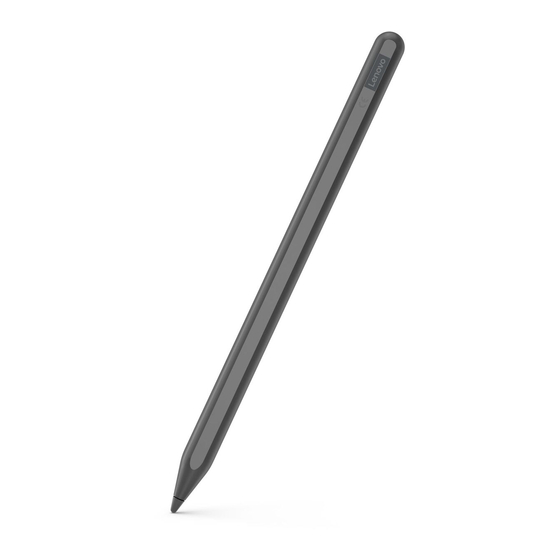Summary of Contents for Lenovo Precision Pen 3
- Page 1 Lenovo Precision Pen 3 Safety, Warranty & Quick Start Guide English/Français/Español/Русский...
-
Page 2: Product Use
Read this guide carefully before using your device. Lenovo Precision Pen 3 You can use Lenovo Precision Pen 3 in place of your fingers for a better experience, such as working with specific applications to write or draw on the screen. - Page 3 3. Insert the end of the new nib vertically into the pen. 4. Rotate the pen tip clockwise until it is firm enough to prevent it from falling loose. • Please keep the stylus carefully to prevent damage to the nib by dropping it.
-
Page 4: Lithium-Ion Battery Notice
Battery recycling information for the United States and Canada Battery recycling information for the European Union Restriction of Hazardous Substances Directive ( RoHS ) Turkey Lenovo products sold in Turkey, on or after June 1, 2009, meet the requirements of the former Republic of Turkey Restriction of Hazardous... -
Page 5: Eurasia Compliance Mark
Electrical and Electronic Equipment Regulations from 22nd of May 2012(“Turkey RoHS”). Ukraine Lenovo products sold in Ukraine, on or after January 1, 2011, meet the requirements of the Technical Directive on Restriction of Hazardous Substances in Electric and Electronic Equipment enforced by the Government, Decision No 1057 dated 2008/12/03”... - Page 6 Warning: Changes or modifications to this unit not expressly approved by the party responsible for compliance could void the user’s authority to operate the equipment. NOTE: This equipment has been tested and found to comply with the limits for a Class B digital device, pursuant to Part 15 of the FCC Rules. These limits are designed to provide reasonable protection against harmful interference in a residential installation.













